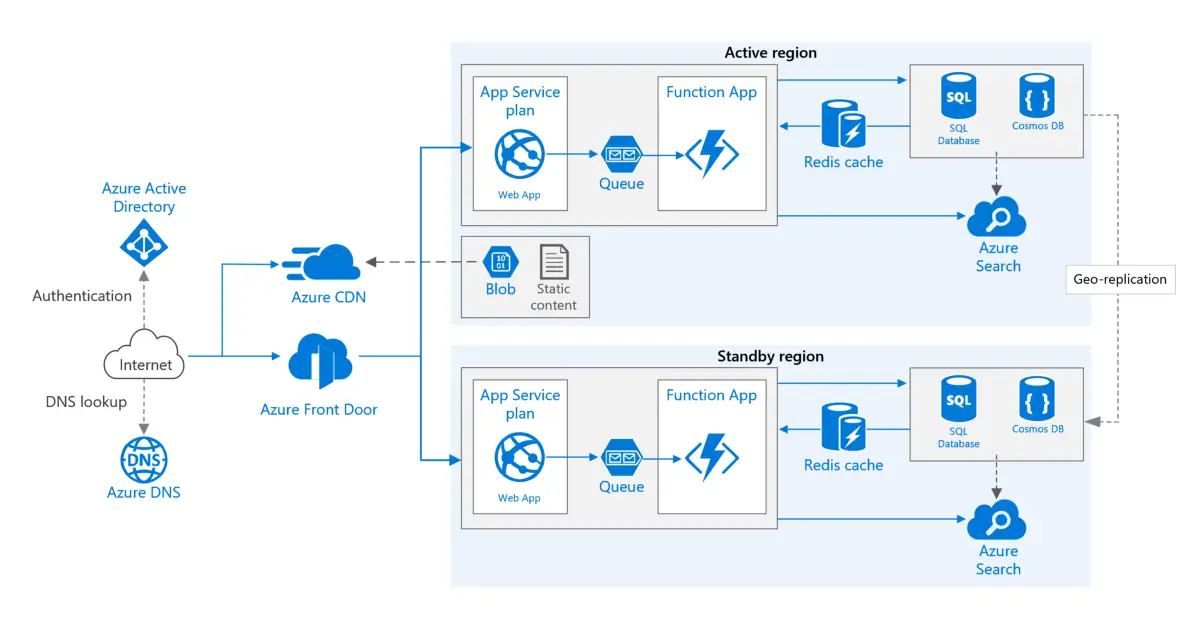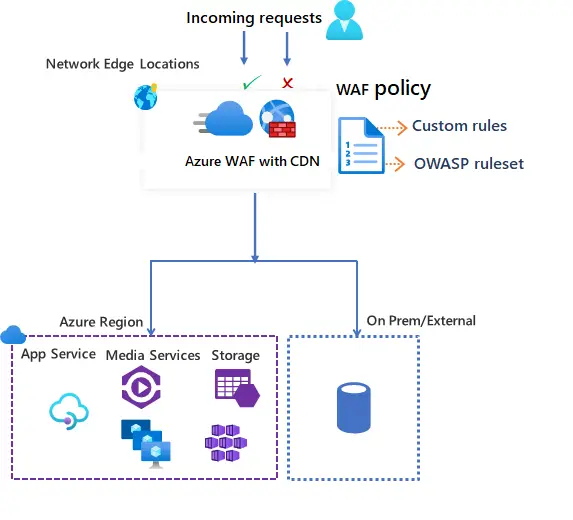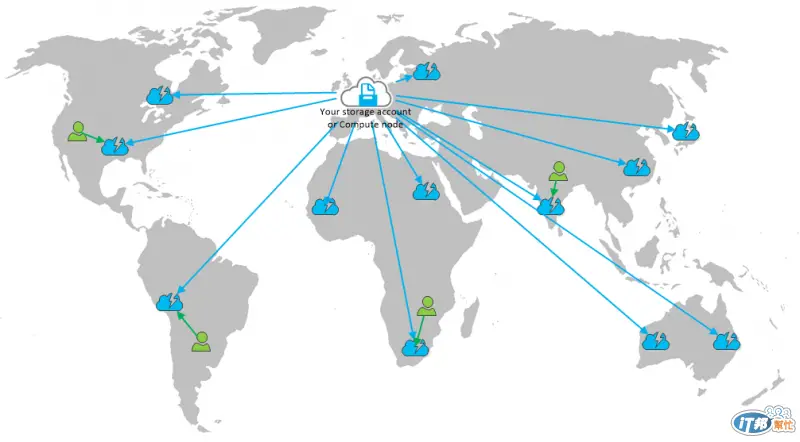Optimizing Media Delivery with Microsoft Azure CDN

Introduction

Microsoft Azure Content Delivery Network (CDN) is a global network of servers that deliver static content, such as images, videos, and scripts, to end-users. By caching content closer to end-users, Azure CDN reduces latency and improves load times, resulting in a better user experience.

Benefits of Using Azure CDN
- Improved performance: Azure CDN caches content on edge servers located near end-users, reducing latency and improving load times.
- Reduced bandwidth consumption: By serving content from edge servers, Azure CDN offloads traffic from origin servers, reducing bandwidth consumption.
- Increased scalability: Azure CDN’s globally distributed network ensures scalability and supports high-volume traffic without performance degradation.
- Lower costs: Azure CDN’s pay-as-you-go pricing model allows you to optimize costs based on your usage.
Best Practices for Optimizing Media Delivery
1. Use the Right CDN Profile
Azure CDN offers different CDN profiles tailored for specific content types. For media delivery, use the “Standard_Media” profile, which is optimized for large file sizes and supports advanced features like dynamic delivery.
2. Enable Caching
Caching is essential for reducing latency. Ensure that caching is enabled in your CDN profile to store frequently accessed content on edge servers.
3. Use a CDN Delivery Rule
Delivery rules allow you to customize the behavior of your CDN. Create a delivery rule to route media content to specific edge servers based on factors such as file type, size, or geo-location.
4. Configure Optimal Cache Settings
Set optimal cache settings to balance performance and storage costs. Consider the following:
- Caching TTL: Specify how long content should be cached on edge servers. A shorter TTL ensures that users get the latest updates, while a longer TTL improves performance.
- Cache Key: Define the cache key used to identify content. Avoid using dynamic parameters that may change frequently.
5. Use Media Services with Azure CDN
For advanced media delivery scenarios, integrate Azure Media Services with Azure CDN. Media Services provides features such as adaptive bitrate streaming, content encryption, and live streaming, which can be seamlessly integrated with Azure CDN.
6. Use the Azure CDN Analytics Portal
Monitor and analyze your Azure CDN usage through the Analytics portal. This provides insights into performance, usage patterns, and potential areas for optimization.
7. Test and Iterate
Regularly test your CDN configuration and iterate on the settings to optimize performance for your specific content and audience.
Conclusion
By following these best practices, you can optimize media delivery with Microsoft Azure CDN. Azure CDN provides a reliable and scalable solution to deliver high-quality media content to your end-users, ensuring a seamless experience and improved performance.## Optimizing Media Delivery with Microsoft Azure CDN
Executive Summary
In today’s digital landscape, delivering high-quality and seamless media experiences is critical for businesses to engage and retain their audiences. Microsoft Azure CDN (Content Delivery Network) empowers organizations to optimize media delivery, ensuring fast, reliable, and scalable content distribution across the globe. This comprehensive guide provides an in-depth exploration of Azure CDN’s capabilities, showcasing how it can transform media delivery and drive business success.
Introduction
Media content has become an indispensable part of online experiences, from streaming videos and music to interactive applications and social media. However, delivering media content efficiently and consistently can be challenging, especially with the increasing demand for high-resolution and large-sized media files. Azure CDN addresses these challenges by providing a global network of servers that cache and distribute content closer to end-users, resulting in reduced latency, improved performance, and enhanced user engagement.
FAQs
What is a CDN?
A CDN is a network of servers distributed across the globe that stores and delivers content to end-users based on their geographic location. By caching content closer to users, CDNs reduce latency and improve the overall performance and reliability of media delivery.
How does Azure CDN work?
Azure CDN leverages a global network of Points of Presence (PoPs) strategically located in major Internet exchange points. When a user requests content from a website that uses Azure CDN, the request is routed to the nearest PoP. If the content is cached at that PoP, it is delivered directly to the user. If the content is not cached, it is fetched from the origin server and cached at the PoP for future requests.
What are the benefits of using Azure CDN?
- Reduced latency and improved performance: Azure CDN caches content closer to end-users, reducing latency and improving the overall speed and responsiveness of media delivery.
- Enhanced availability and reliability: Azure CDN’s global network and redundant infrastructure ensure high availability and reliability, minimizing downtime and ensuring seamless content delivery.
- Cost-effective scalability: Azure CDN scales automatically to meet fluctuating demand, enabling businesses to handle surges in traffic without incurring additional costs.
- Improved security: Azure CDN includes built-in security features, such as SSL/TLS encryption and DDoS protection, safeguarding media content from unauthorized access and malicious attacks.
Subtopics
Media Types Supported
Azure CDN supports a wide range of media types, including:
- Videos: Streaming videos in all popular formats (e.g., MP4, HLS, MPEG-DASH)
- Audio: Streaming audio files (e.g., MP3, AAC)
- Images: Static images in various formats (e.g., JPEG, PNG, GIF)
- Dynamic content: Dynamically generated content, such as web pages and application content
Content Delivery Optimization
- Caching: Azure CDN caches content at PoPs, reducing latency and improving performance.
- Compression: Azure CDN compresses content using industry-standard algorithms, reducing file sizes and optimizing bandwidth utilization.
- Prefetching: Azure CDN prefetches content that is likely to be requested in the near future, further reducing latency.
- Load balancing: Azure CDN distributes traffic across multiple PoPs, ensuring optimal performance and minimizing congestion.
- Geo-filtering: Azure CDN allows content to be restricted to specific geographic regions, ensuring compliance with regional regulations and optimizing delivery for target audiences.
Analytics and Reporting
- Real-time monitoring: Azure CDN provides real-time insights into content delivery metrics, such as latency, throughput, and cache hit rates.
- Historical data visualization: Azure CDN logs historical data for detailed analysis and performance tracking.
- Custom reporting: Azure CDN allows businesses to create custom reports tailored to their specific requirements.
- Integration with other Azure services: Azure CDN integrates seamlessly with other Azure services, such as Azure Media Services and Azure Storage, providing a comprehensive media delivery solution.
Security and Compliance
- SSL/TLS encryption: Azure CDN secures content in transit using industry-standard SSL/TLS encryption, protecting data from eavesdropping and unauthorized access.
- DDoS protection: Azure CDN protects websites and applications from DDoS attacks, ensuring availability and uninterrupted service.
- Content encryption: Azure CDN supports content encryption using industry-standard algorithms, ensuring data privacy and confidentiality.
- Compliance with industry regulations: Azure CDN is compliant with industry regulations, such as GDPR and HIPAA, providing peace of mind for businesses handling sensitive data.
Pricing and Plans
Azure CDN offers flexible pricing plans tailored to different business needs. Pricing is based on factors such as data transfer volume, cache usage, and the number of PoPs used. Businesses can choose from pay-as-you-go plans or commit to a reserved capacity plan for predictable costs and discounts.
Conclusion
Microsoft Azure CDN is a powerful tool that enables organizations to optimize media delivery, ensuring fast, reliable, and scalable content distribution. By leveraging Azure CDN’s global network, advanced caching and optimization techniques, and robust security features, businesses can enhance user experiences, improve performance, and cost-effectively scale their media delivery operations. As the demand for high-quality media content continues to grow, Azure CDN will remain a valuable asset for businesses seeking to deliver exceptional digital experiences.
Keyword Tags
Azure CDN
- Content Delivery Network
- Media Delivery Optimization
- High Performance
- Security
